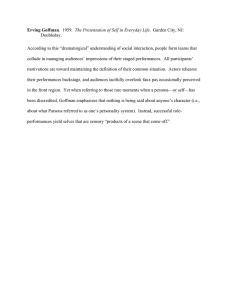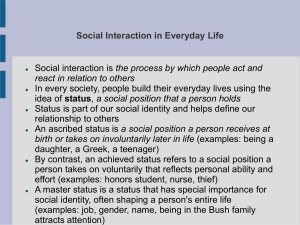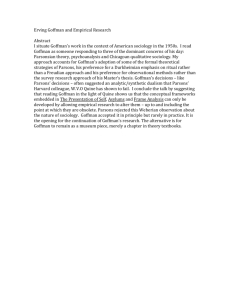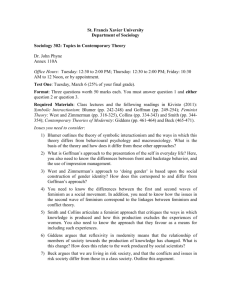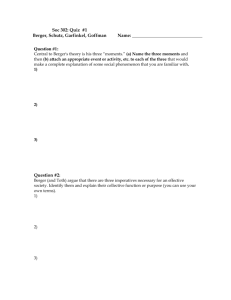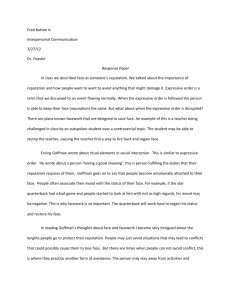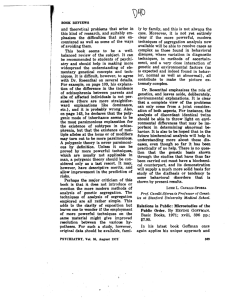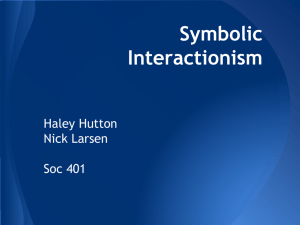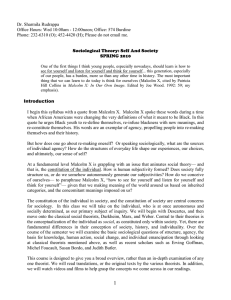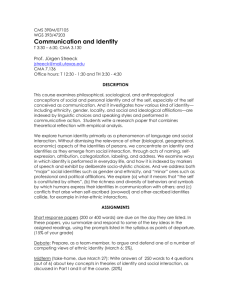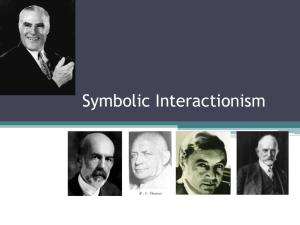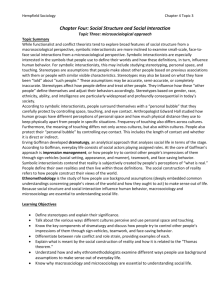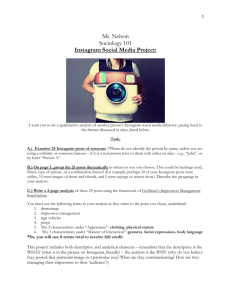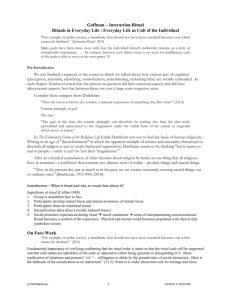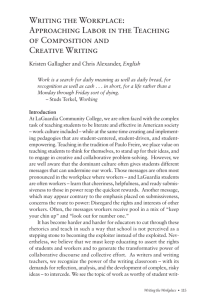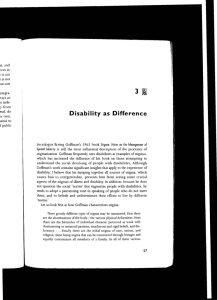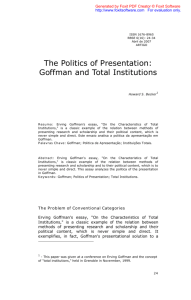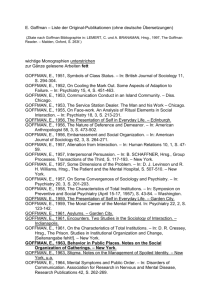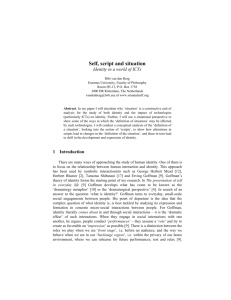Seminar on Goffman
advertisement
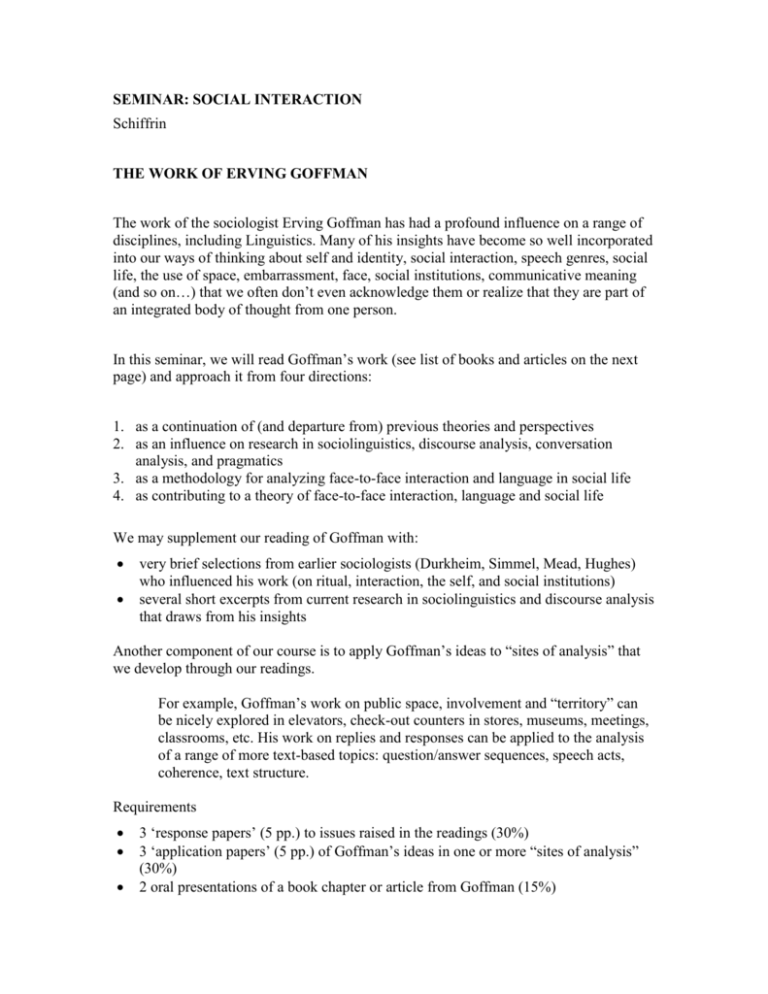
SEMINAR: SOCIAL INTERACTION Schiffrin THE WORK OF ERVING GOFFMAN The work of the sociologist Erving Goffman has had a profound influence on a range of disciplines, including Linguistics. Many of his insights have become so well incorporated into our ways of thinking about self and identity, social interaction, speech genres, social life, the use of space, embarrassment, face, social institutions, communicative meaning (and so on…) that we often don’t even acknowledge them or realize that they are part of an integrated body of thought from one person. In this seminar, we will read Goffman’s work (see list of books and articles on the next page) and approach it from four directions: 1. as a continuation of (and departure from) previous theories and perspectives 2. as an influence on research in sociolinguistics, discourse analysis, conversation analysis, and pragmatics 3. as a methodology for analyzing face-to-face interaction and language in social life 4. as contributing to a theory of face-to-face interaction, language and social life We may supplement our reading of Goffman with: very brief selections from earlier sociologists (Durkheim, Simmel, Mead, Hughes) who influenced his work (on ritual, interaction, the self, and social institutions) several short excerpts from current research in sociolinguistics and discourse analysis that draws from his insights Another component of our course is to apply Goffman’s ideas to “sites of analysis” that we develop through our readings. For example, Goffman’s work on public space, involvement and “territory” can be nicely explored in elevators, check-out counters in stores, museums, meetings, classrooms, etc. His work on replies and responses can be applied to the analysis of a range of more text-based topics: question/answer sequences, speech acts, coherence, text structure. Requirements 3 ‘response papers’ (5 pp.) to issues raised in the readings (30%) 3 ‘application papers’ (5 pp.) of Goffman’s ideas in one or more “sites of analysis” (30%) 2 oral presentations of a book chapter or article from Goffman (15%) 1 final paper (10- 15 pages) combining ‘response’ and ‘application (20%) class participation (5%) READING LIST* Since Goffman was a prolific writer, there is a lot to read. We will all read the books marked with +. We will divide the other readings among us and they will be the source of the oral presentations. +The presentation of self in everyday life +Ritual Interaction [selected chapters] Strategic interaction Behavior in public places +Encounters +Stigma Asylums +Relations in Public +Frame analysis [selected chapters] Gender advertisements +Forms of talk [selected chapters] “Response cries” “Felicity’s condition” *P.S. As an indicator of the demands that Goffman placed upon those who wanted to be among his students, the prerequisite for a course with him was that any student who wanted to be in his class (and of course I was one of them), had to have previously read all his work….
